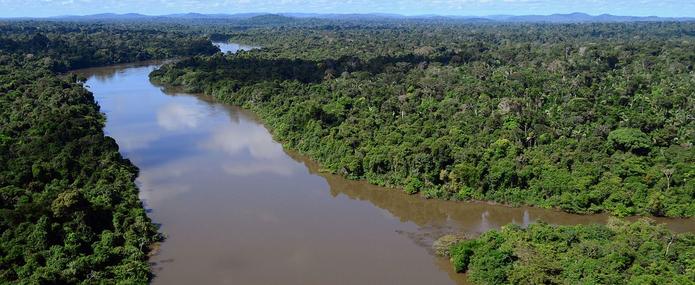For the first time, France has adopted carbon neutrality as a climate objective in the draft law known as the "small energy law" that the government has just transmitted to the Economic, Social and Environmental Council (EESC). It should be understood as a strong political signal, which will not exempt France from making greater efforts to reduce its greenhouse gas emissions, on the contrary. On the other hand, the reduction in the target for reducing final energy consumption, provided for in the same law, from -20% as initially planned to -17% by 2030, is problematic because it seems to indicate that current trends could not be reversed in order to move in the right direction in the next 12 years, while there is still no in-depth evaluation of the levers that could be used not to reduce this ambition in the medium term, in order to remain consistent with the affirmation of carbon neutrality.
Carbon neutrality is a point of balance, at some point in time, between unavoidable greenhouse gas emissions from mainly sectors such as agriculture and heavy industry and the amount of carbon that can be captured either by natural carbon sinks (forests, soils, oceans), constrained by biophysical limits, or, in the hypothetical future, carbon capture and storage technologies. Many studies1 have already shown that these technologies, because of their lack of technological maturity and the associated risks, cannot constitute the alpha and omega of a climate policy, and cannot therefore be used as a pretext to refrain from launching a massive reduction in emissions today.
Carbon neutrality implies that every actor (State or local authority, economic actor) must question its place in a world tending towards neutrality, and as such, as this IDDRI study [in French] showed last July, it constitutes a strong "political attractor". The objective of achieving carbon neutrality by 2050 is indeed a major element of the 2015 Paris Climate Agreement, and seeing France enshrine it in law, as the government has already indicated on several occasions, must make it possible to frame the fight against global warming, by indicating to each sector and each territory that it must itself aim for neutrality and therefore the minimum residual emissions, and take the required actions now. This reinforces France's low-carbon strategy, presented last autumn, within a legislative framework.
The carbon neutrality target is much more ambitious than the previous "factor 4" (division by 4 of greenhouse gas emissions or, in other words, a 75% reduction in emissions between 1990 and 2050) included in the 2015 Energy Transition Act. Indeed, France's national low-carbon strategy, presented in autumn 2018, provides that French emissions will have to be reduced by "a factor of about 8" in 2050, in other words divided by 8, i.e. a drastic reduction, which is essential even before considering the possible coverage of these emissions by carbon sinks.
While the intention seems clear, enshrining this "factor 8" objective in the law would be a reassuring measure of the government's will and ambition, while the carbon budgets set by the Stratégie Nationale Bas-Carbone (SNBC, low-carbon natioal strategy) will be exceeded and a lack of trust is being expressed in civil society. After consulting the EESC and the Council of State, it will be up to the members of parliament to take up this issue and, when examining the law, to reinforce the government's promise.
But this long-term ambition is tarnished, in the same draft bill, by a setback on a shorter-term objective: the target for reducing final energy consumption is projected to fall from -20% between 2012 and 2030, as provided for in the Energy Transition Law for Green Growth 2015, to only -17%. While France's emissions are on the rise, aligning the objective with current trends today, instead of questioning the reasons for this delay, weakens the credibility of a programming law and the political scope of the inclusion of neutrality in the law! Such a revision of a medium-term objective should not be done without having specifically debated an assessment of what works and what does not, what has already been tried and what can still be done within 12 years. The recent draft decree on the Programmation Pluriannuelle de l'Énergie (PPE, multiannual energy programming) already took this step backwards, without France being able to base its decision on a serious assessment of the levers of action that work and those that have not been successfully activated or made to work, an assessment that on its own can justify that it is no longer possible to reach -20% by 2030 and build a common understanding between actors and the public on this issue.
An IDDRI study [in French] in October 2018 showed that the transport and buildings sectors remain to date the most worrying in terms of emission trajectories. It would be necessary to strengthen measures to control travel demand, support the modal shift from freight transport to rail and ensure that new devices to support the purchase of fuel-efficient vehicles achieve their objectives. Concerning the renovation of buildings, IDDRI suggests the elaboration of a roadmap to initiate a structural transformation over a period of 5 to 10 years, integrating incentive and regulatory measures and the structuring of the supply.
Photo credits: Wikipedia
- 1IDDRI Study [in French]: https://www.iddri.org/sites/default/files/PDF/Publications/Catalogue%20Iddri/Etude/20180925-ST1018-neutralite%CC%81carbone.pdf ; Policy Report EASAC ; IPCC Report on 1,5°C Global Warming: https://www.ipcc.ch/2018/10/08/summary-for-policymakers-of-ipcc-special-report-on-global-warming-of-1-5c-approved-by-governments/



